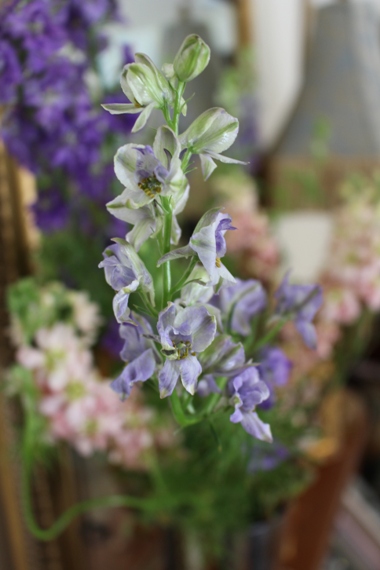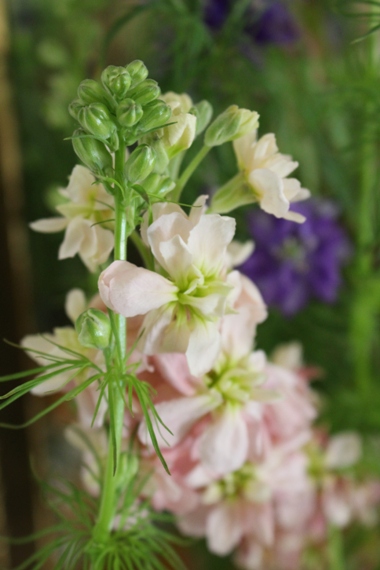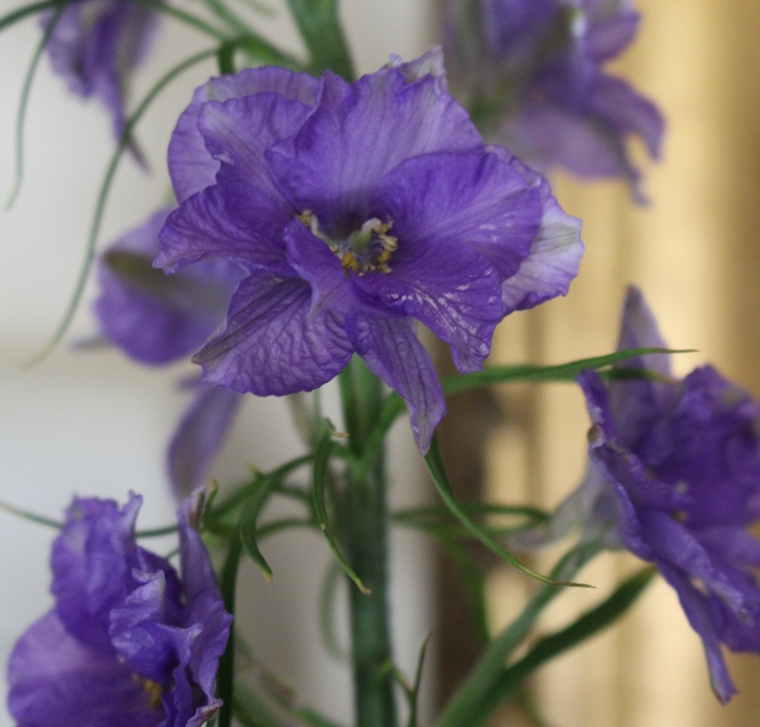In my ongoing efforts to force spring into being, this is a bouquet I put together using some stock and delphiniums. The former is a soft shade of peach and offers its sweet perfume as background to its beauty, while the latter bridges the magical space between indigo and purple, its feathery upper foliage fluttering like bright green wisps of smoke. Together they form a pastel patchwork of loveliness – the perfect antidote for all the dirty snow that refuses to go entirely away.
I like the delphiniums for their tendency to curve upward when arranged in a vase. Some flowers stay rigidly in place, their stems not bending in the least bit (roses and carnations come to mind). Others are more flexible and wild, bending and turning to where the light and their surroundings dictate. Tulips are masterful at this, as are these delphinium stalks. (I think they were designed to be so accommodating; in the garden the tall stalks will often be felled by summer storms, after which they right themselves as best they can by rising straight up and resulting in all sorts of crazy curves.)
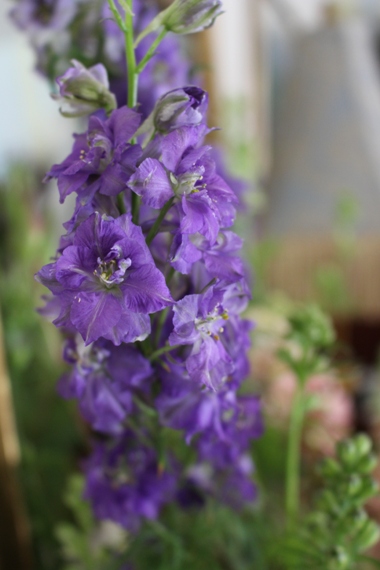
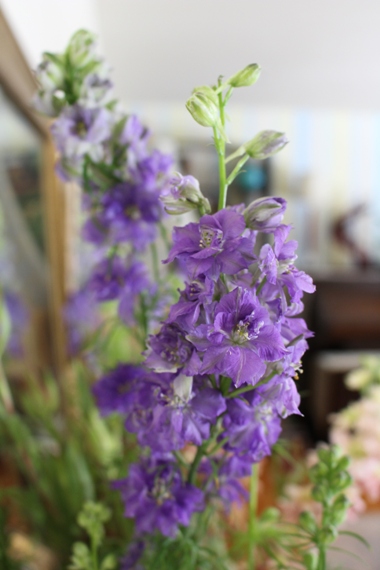
In a bouquet, the effect can be enchanting, if you’re willing to go with the flow and let nature takes its winding course. My gardening inspiration, Lee Bailey, used to love the effects that transpired when tulips were left to their own devices in a vase. Over the years, I’ve come to appreciate the unexpected results as well. Sometimes a lighter touch works better than a strict and heavy hand.
As for growing a delphinium in your own garden, it’s no easy feat. Bailey himself admitted defeat when they kept getting knocked over by summer storms. He turned to foxgloves instead as a similarly-vertical substitute, then ended up loving them for their own charms. Personally, I prefer the foxgloves as well. The only fussy thing I want in a garden is me.
